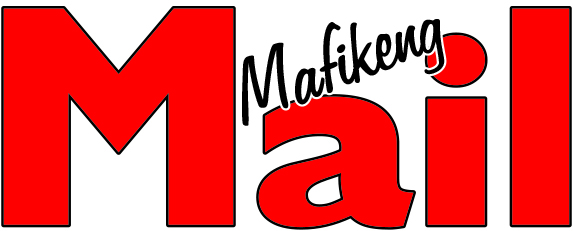AGRI-PULSE - When it comes to agricultural innovation, the Netherlands is a leader. And particularly in the area of precision technologies, a lot has been happening lately. Some recent innovations have been thoroughly tested and proven; others are still new but show a lot of potential. Three innovative onion farmers share their experiences with precision agriculture.
The Thes Agro farm boasts plenty of in-house knowledge about precision techniques. In fact, such methods are everyday practice these days on its fields in the Dutch village of Burgh-Haamstede. “All our machines are GPS-guided, and we perform a lot of actions using task maps, which allow us to work in a highly location-specific way,” says the company’s Johan van der Wekken.
Thes Agro started variable-rate spraying of soil herbicides in onions, at the suggestion of the supplier Van Iperen, in 2016. “They asked us if we wanted to do some trials. We saw it as a good opportunity, since many of our fields contain different soil types. With traditional spraying of soil herbicides, we always had to play it safe with the dosage, so we went for a happy medium. And the result was that we often got crop injury on lighter soils because we were using too much. Meanwhile, we often failed to control weeds sufficiently on the heavier parts of a field. In short, in many ways it wasn’t ideal.”
7 to 10 % added value
Variable-rate spraying of soil herbicides is done using task maps, created with the help of a soil profile. The maps are uploaded to the sprayer’s GPS, and the spraying agent is administered according to the soil composition. Comparisons with reference strips show that the method is effective: precision spraying adds between 7 and 10 per cent value, Van der Wekken says. “Crop injury is a thing of the past, and we’ve succeeded in reducing weed pressure. There’s no real reduction in the use of plant protection products, but we’re putting the active substance right where it’s needed most.”
When it comes to the variable-rate spreading of artificial fertilizer – a method the farm has also been using since 2016 – the added value is less definite, says Van der Wekken. In this technique, the fertilizer dose is geared to the soil profile incorporated into the task map. “This is a precision application that hasn’t really had any added value for us yet. That’s partly because we can’t use sprinklers on our fields. That makes it hard to get the most out of artificial fertilizer, since it’s more effective if you add water right afterward.”
Spot-spraying
As of yet, Thes Agro isn’t planning to use task maps to sow onions, for the simple reason that its seeders aren’t yet equipped to do so. “But we hope to be able to do more with the site-specific application of contact herbicides in the future,” says Van der Wekken. “Spot-spraying, where a drone maps the locations of the various weeds, would be ideal. You don’t need to use herbicides on the full field any more, only where the weeds are. So the environmental gains are huge. But to make it a worthwhile and profitable practice, other, more effective contact herbicides would need to be permitted.”
Seeding and weeding robot
A bit further south, at his farm in the village of Schoondijke, organic grower Mark Buijze has also gained plenty of experience with GPS and task maps. He has been using a GPS-guided robot to seed and weed his onions and shallots since March 2022. “To increase my returns I started growing higher-value crops last year, including onions,” he says. “Since I prefer not to hire external personnel, I had to find a way to limit the need for workers. The FarmDroid seeding and weeding robot helps.”
The robot, which runs on solar power, drives itself and uses task maps and GPS to determine where each seed should be planted. “It stores the seeds’ location in its memory, so it knows exactly where to weed,” Buijze says. “The robot works within and between the rows. Between the rows it cuts the weeds with a wire, and in the rows it uses a moving knife.”
The technology works well, Buijze says, although it took him a while to trust it. “It made me nervous watching the robot weeding before the onion seeds had sprouted. You can’t help thinking, ‘This thing is about to destroy my entire field.’ That’s why I played it safe last season and didn’t let it work too close to the seeds. Because of that, we had a bit more trouble with weeds than we really needed to.”
Useful for onion growers
Although the robot basically works well, Buijze plans to make a few small technical tweaks this winter. “For an optimum result you need to adjust the robot to your specific situation and soil type. So we’ll be changing the angle of the weeding knives, for instance.”
When it comes to onion cultivation, the robot has a limited capacity, says Buijze. “In an 8-hour period it can sow about 1.5 hectares and weed 2 hectares. You could keep it running overnight, of course, but I don’t fancy doing that. I’d rather keep an eye on it. And I’m still figuring out which crops the machine is best used for. But in any case, it clearly has potential in onions.”
Another plus, Buijze says, is that the robot weighs “just” 700 kilograms, meaning it can be used often. “If a field’s at all passable, it can get to work. It’s not like with a tractor. And it won’t damage the soil or the crop. But since this robot is lighter than a regular weeder, the blades and wires go through the soil with less force. So it’s important to catch the weeds at an early stage – they can’t be any bigger than 2 or 3 centimetres.”
Sowing based on soil scans
Last year Jurgen Siebring began sowing onions according to the organic matter content of the soil. He runs a farm with his parents in Oranjedorp, in the northern Netherlands. “First we do a soil scan to determine the fields’ organic matter content,” he explains. “Then we put that information into task maps and input them into our GPS-controlled seed drill. We adapted the seed drill for this purpose with our machinery supplier.”
Siebring experimented with different sowing densities in combination with different organic matter content levels. Densities varied from 2.9 to 4.1 sowing units per hectare, he says. “We got the best results in areas with a high organic matter content, about 12 per cent, combined with a density of about 3.1 sowing units per hectare. In those areas, yields increased by 4 or 5 tons per hectare. I didn’t notice any differences in terms of uniformity or quality, but the sampling results aren’t in yet.”
A lot to be gained
This year Siebring hopes to build on the results he’s achieved so far. In concrete terms, that means applying more compost to actively try to raise his fields’ organic matter content. “And then, by adjusting the sowing units per hectare, we hope to raise our yields further, and to produce bigger onions. After all, more organic matter means more nutrients for the crops, which will hopefully lead to a bigger size. I’m convinced that there’s a lot to be gained by using this approach. The first results are promising.”









